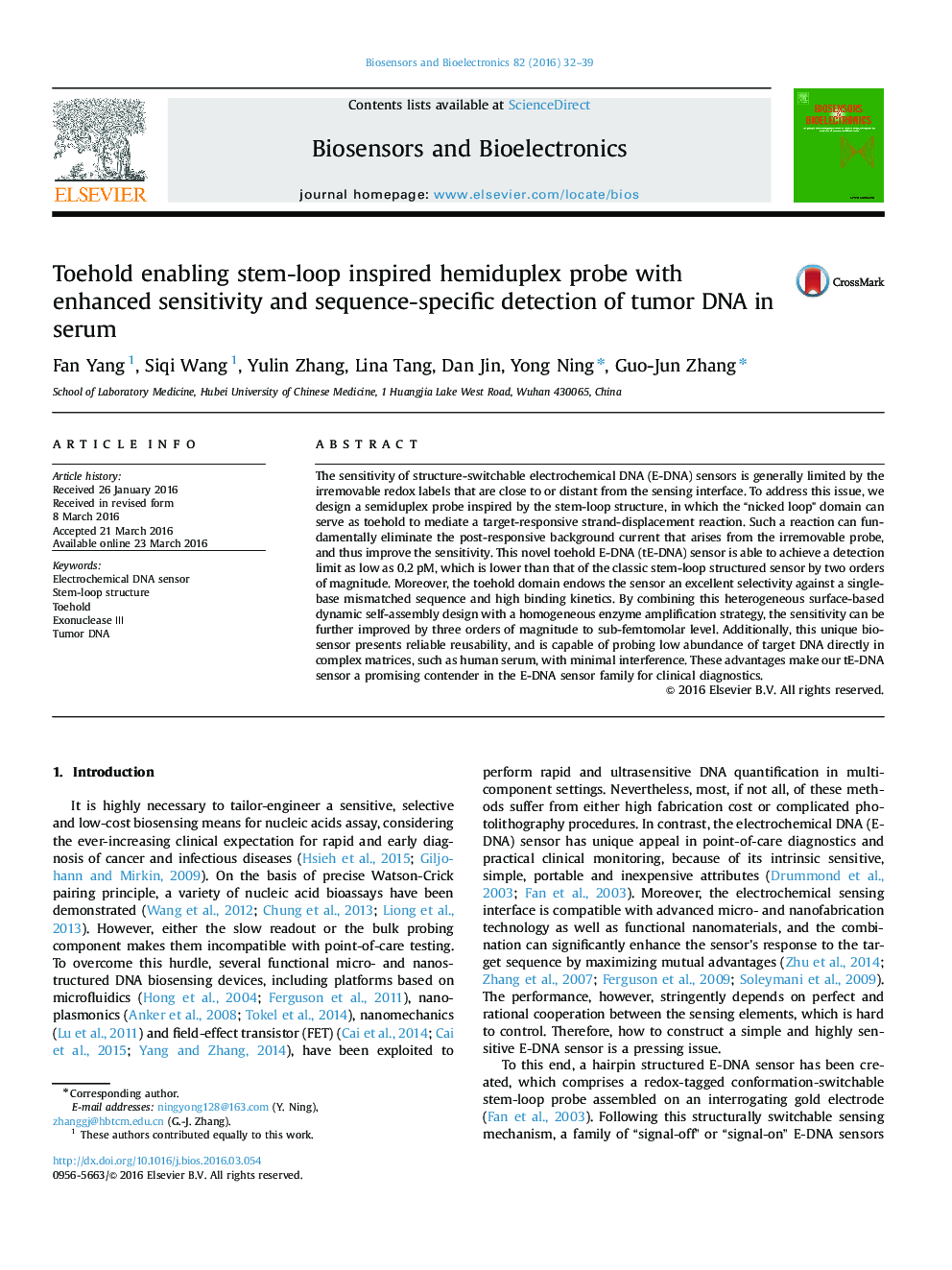| Article ID | Journal | Published Year | Pages | File Type |
|---|---|---|---|---|
| 866257 | Biosensors and Bioelectronics | 2016 | 8 Pages |
•We develop an ultrasensitive and highly specific electrochemical sensor inspired by stem-loop structured probe.•The sensor interfacial design is compatible with homogeneous enzymatic amplification.•This tE-DNA sensor achieves a high sensitivity up to 0.18 fM.•This sensor is reusable and can be employed directly in 50% human serum with minimal signal degradation.
The sensitivity of structure-switchable electrochemical DNA (E-DNA) sensors is generally limited by the irremovable redox labels that are close to or distant from the sensing interface. To address this issue, we design a semiduplex probe inspired by the stem-loop structure, in which the “nicked loop” domain can serve as toehold to mediate a target-responsive strand-displacement reaction. Such a reaction can fundamentally eliminate the post-responsive background current that arises from the irremovable probe, and thus improve the sensitivity. This novel toehold E-DNA (tE-DNA) sensor is able to achieve a detection limit as low as 0.2 pM, which is lower than that of the classic stem-loop structured sensor by two orders of magnitude. Moreover, the toehold domain endows the sensor an excellent selectivity against a single-base mismatched sequence and high binding kinetics. By combining this heterogeneous surface-based dynamic self-assembly design with a homogeneous enzyme amplification strategy, the sensitivity can be further improved by three orders of magnitude to sub-femtomolar level. Additionally, this unique biosensor presents reliable reusability, and is capable of probing low abundance of target DNA directly in complex matrices, such as human serum, with minimal interference. These advantages make our tE-DNA sensor a promising contender in the E-DNA sensor family for clinical diagnostics.
